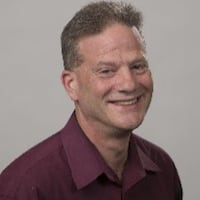Lane’s comments to the Dayton Daily News Wednesday about Oakwood’s change are a departure from the 147-member union’s practice of not differing publicly with the district’s administration. He said the district’s weekend decision was unexpected by many in the OTA.
“We were surprised by it – the timing of it,” Lane said. “And our concern is for the academic progress of with the potential for increasing quarantines” and students’ health “in situations where social distancing has been reduced.”
Oakwood Superintendent Kyle Ramey said Wednesday in an email the administration has “a very open and collaborative relationship with our teachers’ association.”
Ramey said “this decision was shared with staff, families and our community as soon as it was finalized.”
Lane said district leaders and the union have had ongoing conversations, and “have worked together for six or seven weeks” on the issue.
He spoke to Ramey – and two board of education members – “over the weekend once the decision was changing from what we thought was going to be.”
Lane said “there is no easy decision to make here…The teachers were hopeful that we would maintain our schedule. We’ve had a good year. We’ve made good progress with our students. We know that our community – in a number of places – would like to see us full time.”
The OTA had plans to meet virtually Wednesday night and “have a conversation related to potential action. I don’t know that there’s going to be any. That’s not something we typically engage in,” Lane said.
“What we don’t want to do is disrupt our student learning,” he said. “So whatever action we take will not disrupt student learning. It is important for us to try to do our best to continue the academic progress of our students through the fourth quarter.”
Since early this school year, the vast majority of Oakwood students have chosen the option of half-day, face-to-face instruction five days a week, Lane said. That schedule was working for both teachers and students, he added.
“We’re not speaking out against the decision,” Lane said. “But we want the students and community to know that this decision puts students in a position of a higher-risk category and we want to re-enforce the message that it becomes that much more important for protocols to be followed.”
Ramey said the district’s “building administration, support staff and teachers will continue to practice the protocols that have allowed us to be successful so far this school year. We have enjoyed the relative stability we have experienced since August.”
Under the new plan, Ramey agreed that “social distancing will lessen, which may increase quarantines. However, with the changes in quarantine recommendations, we still believe we can maintain three-foot distance between students in most classrooms.”
With Oakwood’s spring break set for March 29 to April 2, Lane said it is imperative that parents and students who travel out of state “be vigilant” in locations where mask mandates have been lifted and where COVID-19 variants have been reported.
“Teachers are lucky. We’ve been vaccinated,” he said. “We have an additional layer of protection…Our concern is for students and keeping them healthy so they have a good fourth quarter.”
About the Author
